9+ Best Practices for Acquiring Email Marketing Leads
Email marketing has had a bad rap over the last few years. It, like other new technologies that marketers have gotten their hands on over the years, has become the target of considerable mockery. Gary Vaynerchuk famously says, “Marketers ruin everything.” He singles out email in an Inbound Conference keynote.
Because of this broad disdain for email marketing, several businesses are hesitant to fully embrace its power and efficacy. That’s a shame, because email marketing is the lynchpin of all Internet marketing. According to McKinsey, email marketing is 40 times more effective than social media in terms of customer acquisition.
Email attracts more website visitors, converts website visits into leads, nurtures leads into customers, and, maybe most crucially, deepens your client relationship. Your email marketing will boost your lead generation, sales closing percentages, and customer happiness if you can provide the correct information to the appropriate audience at the right time (and upsales).
In this article, I will share with you various practices that you can use to acquire leads for your email marketing campaigns. Let’s jump right into the details!
What is an email lead?

A prospective customer who has demonstrated interest in a product, service, or brand and has opted in to receive marketing emails from your business is referred to as an email lead. The lead’s email address is typically obtained by a subscription form, direct chat, or phone call.
What is email lead acquisition?
Email lead generation is a method of gathering leads by using an email opt-in form. It all comes down to acquiring information about potential customers, such as their name and email address. An email lead generating strategy, however, does not stop with the lead capture form. It also entails carefully nurturing leads in order to convert them into clients.
Why is email lead acquisition important?
Despite the rise of new marketing channels, email remains a popular and dependable method for marketers to contact and engage with their target audiences. Why should you concentrate on email lead generation?
- It has a tremendous return on investment: for every dollar invested on email marketing, $38 can be earned.
- It’s a great method of obtaining higher-quality leads.
- It provides an opportunity to improve consumer interactions.
- Email is a simple approach to notify prospects of new offers, deals, products, events, or services.
9 Best Practices for Acquiring Email Marketing Leads
1. Create lead magnets
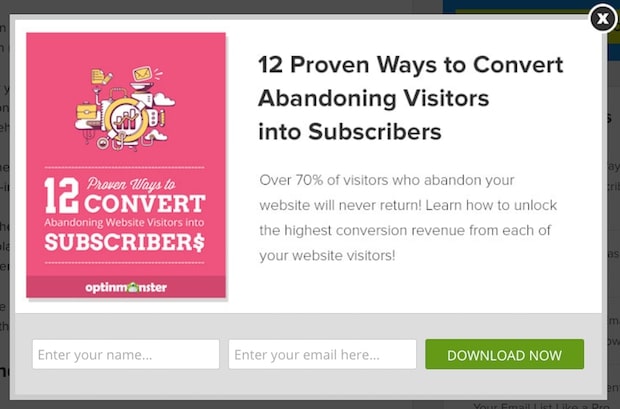
Accept that no one will give you their email addresses just because you want them to. People tend to be protective of their email addresses, and you need to give them a compelling reason to share them with you. Lead magnets are used for this purpose.
A lead magnet is basically an incentive that you provide to potential leads in return for their contact information, most notably their email addresses. To create a lead magnet, think of something of value to your visitors that will entice them to submit their email addresses. Your business kind can give you an idea of what you can provide.
So what are some of the most powerful lead magnets?
- If you are in retail, you can provide a discount on the customer’s first purchase after subscribing. You can also think about offering free shipping.
- If your company specializes in research or analysis, your lead magnet may be the complete text of your studies, which you make available to registered users for download.
- Fitness and nutritional firms frequently provide workout or eating regimens via email.
- Free trials can be used as lead magnets by software development companies.
You get the idea. However, there are some guidelines you should follow while creating lead magnets and making them work for you. To be fully effective, your offer should include the following elements:
- Real value that the customer can perceive right away.
- In an instant. You should provide the reward as soon as your visitor subscribes.
- Specific and precise. Always describe your offer in explicit terms so that the customer understands the benefits.
- A real-world answer to a real-world problem. Try to provide something that your clients require.
2. Encourage your readers to share your emails
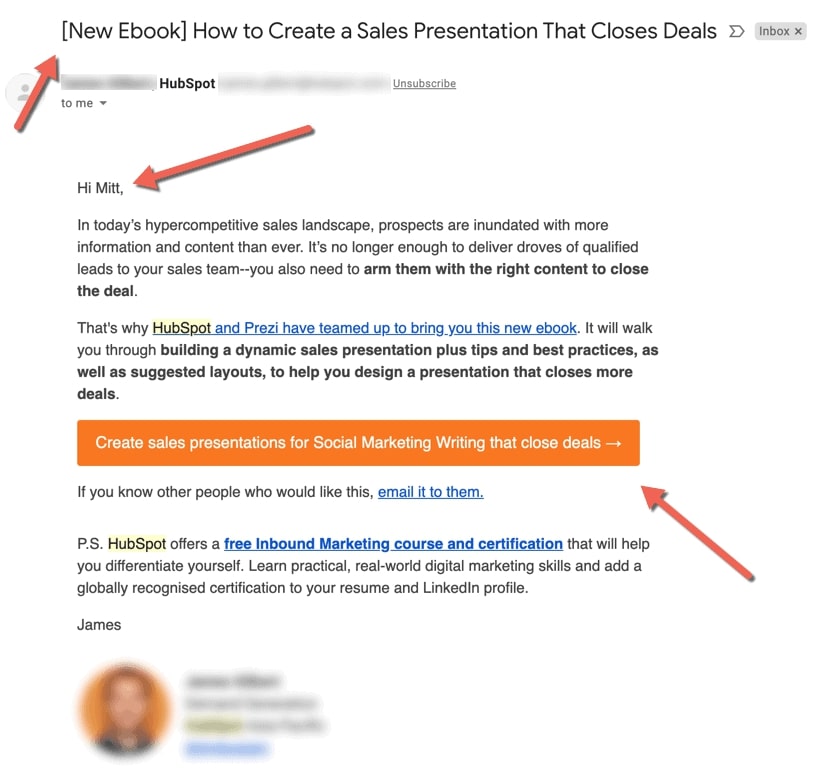
You can acquire new leads by leveraging your existing subscribers. Add a “Forward to a Friend” button in your email, and your customers will begin giving you leads. Of course, the emails should be interesting enough to share:
- Offers with a time limit
- Following an order, you will receive an email with a confirmation code.
- Emails of welcome to new members
This strategy builds trust for a strong brand. People are more likely to buy your product if they receive your email from someone they know rather than from you. Alternatively, you can solicit referrals from your clients by providing incentives to both them and the individuals they refer you to.
Another excellent suggestion is to incorporate subscription links in your corporate email signatures. When your employees’ emails are forwarded in this manner, the receivers will be able to subscribe to your content by supplying their email addresses.
3. Include CTAs in every blog post
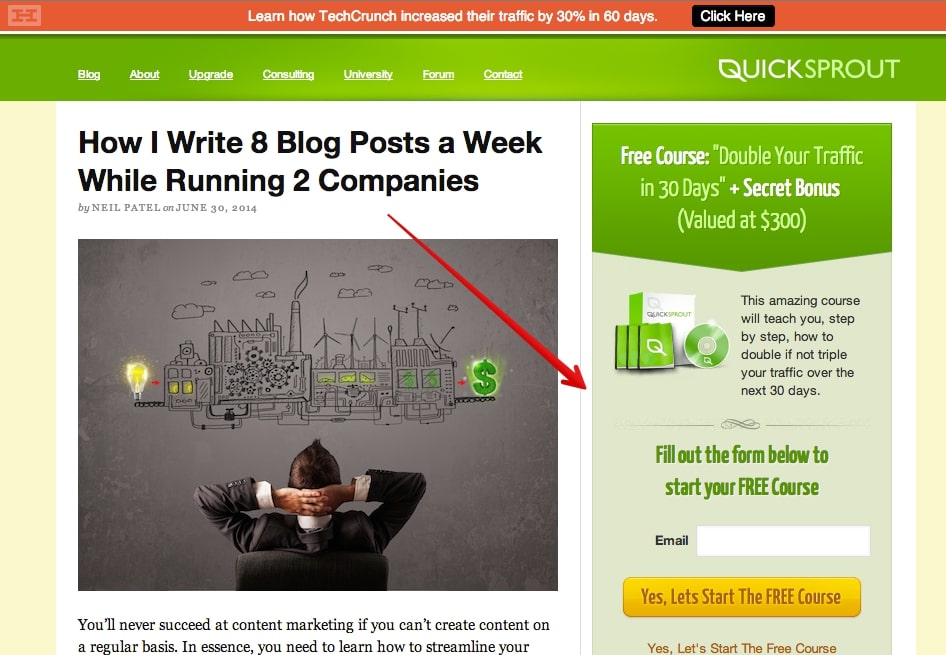
Your blog is another approach to expand your email list. A blog article is an excellent area to include numerous calls-to-action (CTAs), so why not include “Subscribe” as one of them? People who visit your site and read the pieces may desire to follow your material in the future. Give them this option by including a “Subscribe” link or button at the bottom of each post.
Targeting CTAs based on your reader’s interests about your business is a solid strategy. It’s pointless to offer a subscription to people who have already subscribed, isn’t it? Rather, encourage them to share the post.
However, for first-time readers, provide the option to subscribe to your blog in order to see further fascinating and valuable content. However, try not to be overly invasive - only ask for what you need. If you want email addresses, just email addresses should be asked for. And one more thing - in order to entice readers to subscribe, you must provide relevant and valuable content.
4. Give extra content in your blog
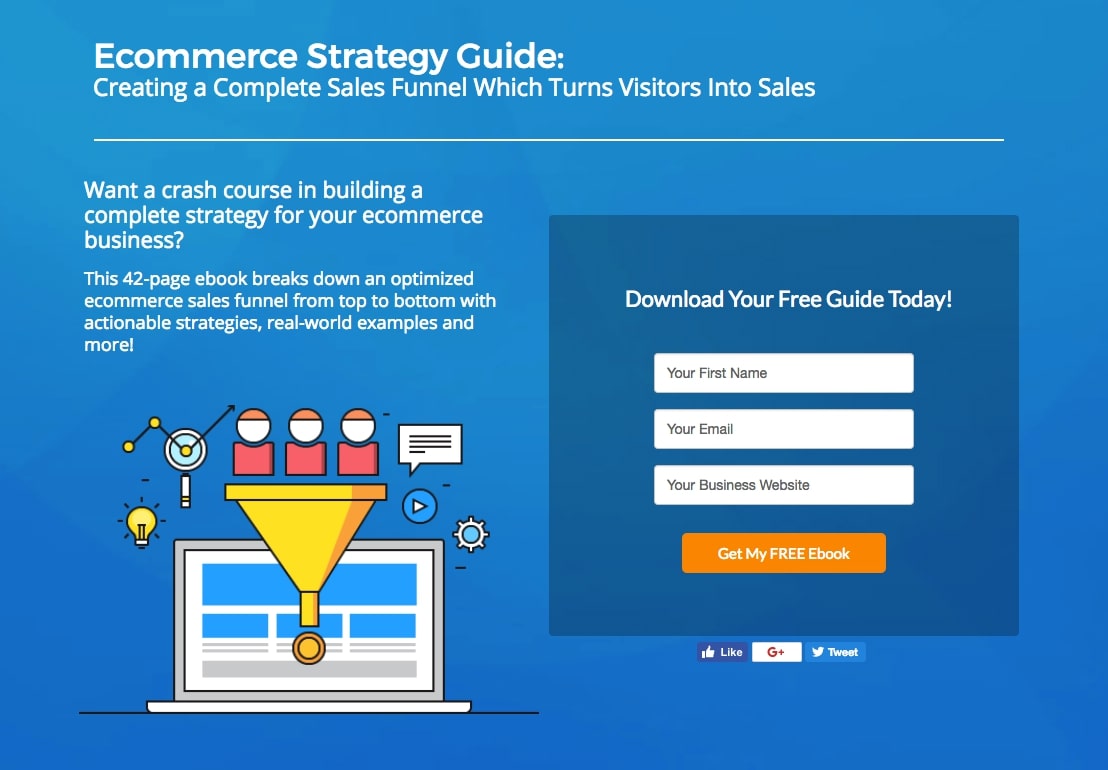
The type of information we’ll be discussing now is also known as “gated content.” It is the content that is only accessible after subscribing. The website visitor is requested to fill out a subscription form (usually with only one field – Email) in order to see, play, or download extra content.
Don’t be afraid to use gated content — according to statistics, 80 percent of all B2B content is gated. When you wanted to see a report or a product demo, you undoubtedly noticed registration forms show up. That is a piece of gated content for you.
Of course, in order to entice your visitors to join, you need to provide an appealing introduction to what they may expect if they subscribe. Create a quick description of your content’s important elements and publish it on your website next to a registration form. If your visitors are fascinated, they will subscribe to view the rest of the content.
What can you offer as gated content? It’s quite a lot actually:
- Books
- Reports
- Product demos
- Videos
- Any other engaging content that you create
5. Acquire emails with live chat
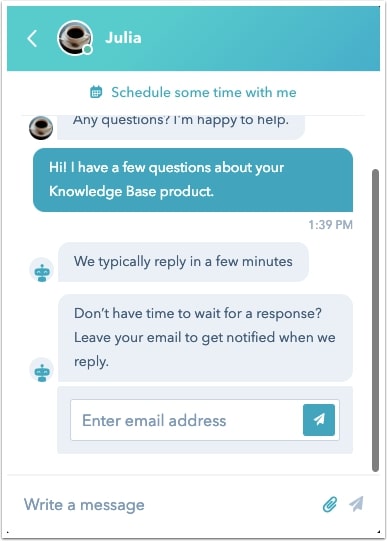
Live chat is also an excellent opportunity to acquire email lists. Making the chat available without registration is a good practice; nevertheless, you can ask for the customer’s details during the session. There are numerous approaches you can take:
- In a pre-chat form that you ask your consumer to complete as they wait for the next available agent to respond. In addition to gathering the customer’s information, you can also ask for their name to begin the conversation in a more personal manner. You can also include a field for a brief summary of the customer’s problem.
- When the team is not online, an offline form is presented. The main message to the consumer should be that you are requesting their email address in order to notify them when the team is back up.
- During the discussion, you can ask a direct query. This is a natural question to ask in a dialogue between a consumer and a support representative. Typically, the chat transcript is given to the customer’s email address for future reference; hence, asking for their email address is quite reasonable.
6. Use exit-intent popups
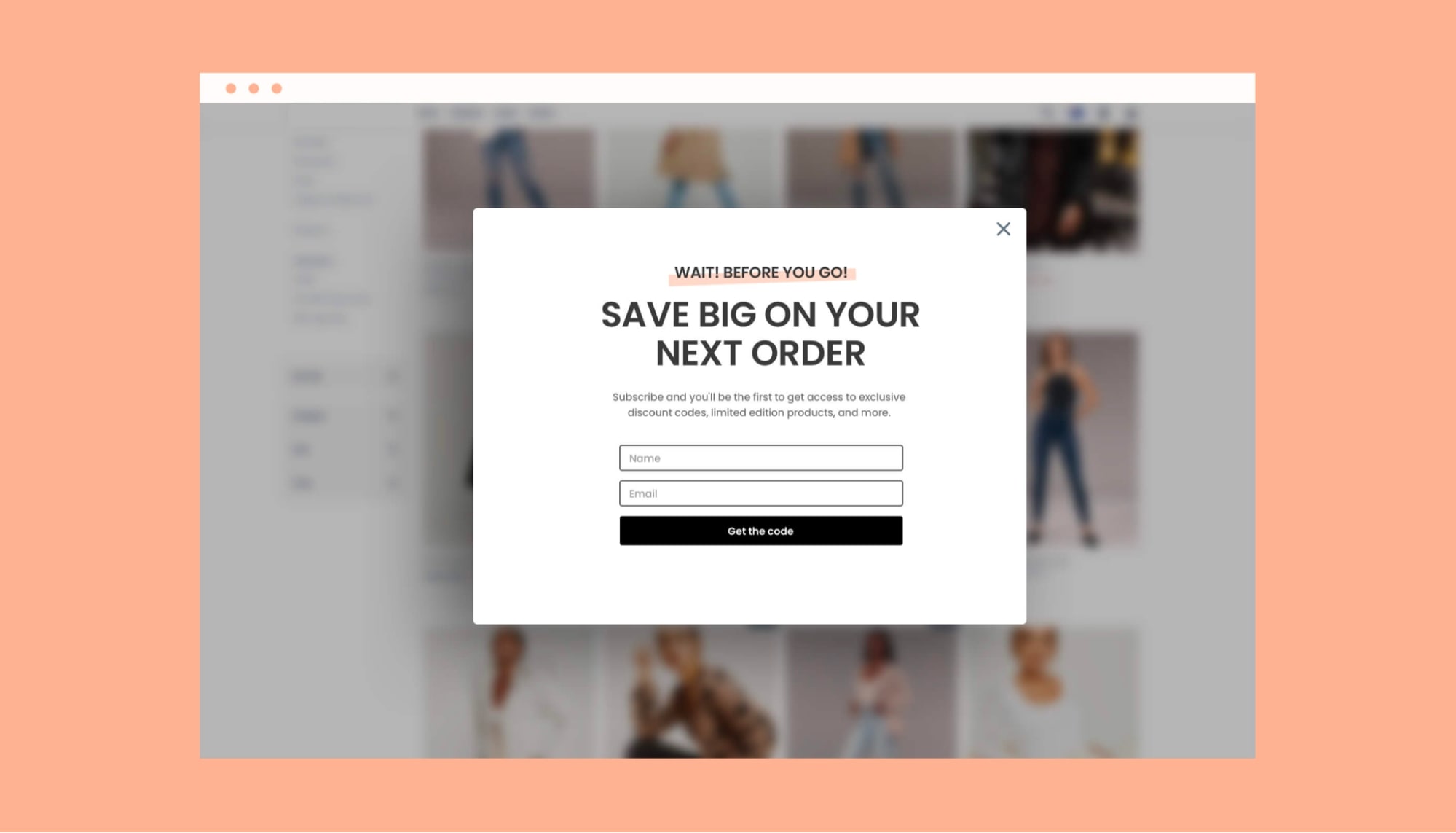
Exit-intent popups are an excellent method to boost conversions. An exit-intent popup can convert 10-15% of existing visitors, according to statistics. What exactly is an exit-intent popup? You’ve probably seen it thousands of times. When you move your mouse to close a particular spot on the website, a lightbox displays on the screen. The system detects mouse movement and shows the popup at that precise instant.
You can present different content in the popup depending on the website the visitor has been exploring - a discount offer, a special deal, but basically, it is a call to subscribe to receive some valuable offer. It may be an e-book, a checklist, a tutorial, or a newsletter – whatever material works best for your company. Of course, provide an email section so that you can send the content to the customer while acquiring them as a lead.
7. Take co-marketing opportunities
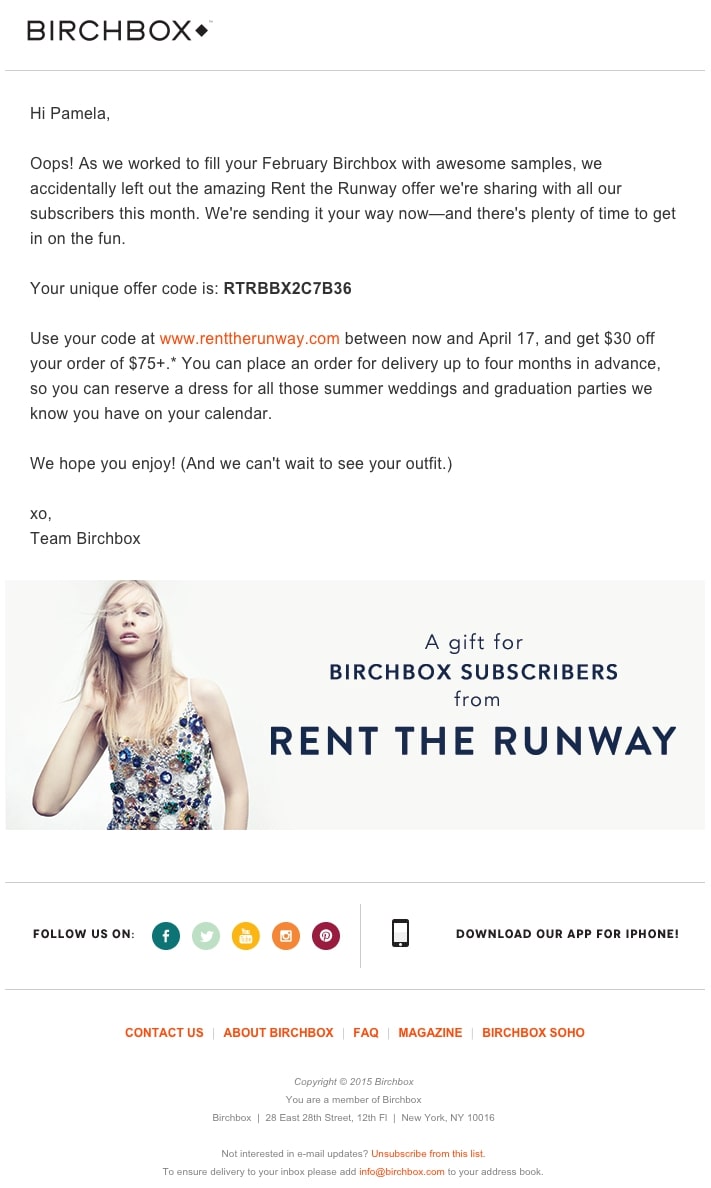
Co-marketing partnerships are a great way to expand your consumer base and, of course, acquire new email leads. You can reach your partner’s customers and vice versa in a collaboration.
So, how does co-marketing partnership work?
- Write guest posts. You can leverage your partner’s resources to promote your content and raise brand awareness. Furthermore, by including a clever CTA at the end of your piece, you may encourage visitors to subscribe to your blog for future updates.
- Because you and your partner are in a similar industry, you and your partner can organize a combined promotional event – a webinar, a competition, or a giveaway – where you may pool your resources to offer appealing prizes or educational materials.
- Being mentioned in your business partner’s newsletter. This is a method of reaching out to their email list.
Of course, such a collaboration is a two-way partnership. Ascertain that you can provide your partner with comparable benefits in exchange for exposure to their consumer base. For example, if you’re trying to acquire email leads but have a strong Twitter presence, you may collaborate with a company that performs massive email marketing campaigns while introducing your partner to your Twitter following.
8. Add CTAs to your guest post bio

While the author’s bio should be one of the last things your visitor sees in your guest post, it should also be one of its main highlights. The primary objective of your bio is not to inform readers about you. Instead, it serves as a gateway to your website, social network profile, or other business tools.
What components make up a bio that converts?
- Excellent guest post content. You must captivate and hold your reader’s attention from beginning to end.
- Your bio should be brief and include a photo of yourself. Readers have a higher level of trust in authors they can meet “face to face.”
- CTA (Call to Action). Offer the reader the option of subscribing to your blog or downloading other high-quality content if you have it. The reader will be required to give an email address in both circumstances. And just like that, your email leads are going to come in.
9. Promote content on social media
If you have a large social media following, you can use it to increase your email address collecting. You could, for example, start a campaign on Twitter or Facebook offering to download your high-quality content.
What can you promote here on social media? Generally, it’s the same content you offer for subscription somewhere else:
- Reports
- Product demos
- E-books
- Video tutorials
- Etc.
Your followers will need to give their email addresses in order to view the content. You can also hold contests among your social network followers, offering a prize in exchange for an email address.
Include social sharing buttons wherever possible – in emails to customers, welcome messages, and thank-you messages, for example – so that people can share their experience with your brand with their friends and followers. Also, make sure your landing page has social sharing buttons.
10. Add a signup button to your Facebook business page
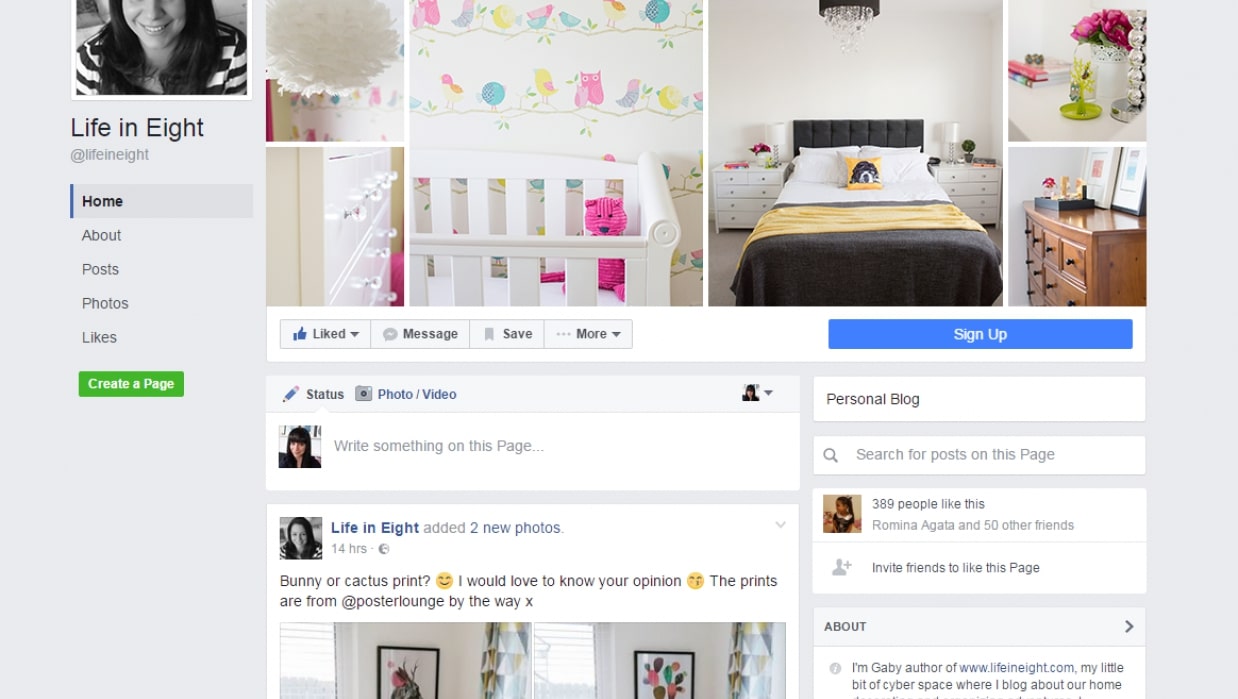
Facebook active users surpassed 2.50 billion in December 2019. Today, having a Facebook presence is essential for any marketing strategy. Any business worth its salt has a Facebook page, so why not utilize it to acquire new leads for your email marketing?
People will stumble across your Facebook page while browsing, even if they are not your followers or users. Some may come to you on the recommendation of a friend, others may peruse their friend’s “likes,” and yet others may find you when looking for a similar product or service. It is your responsibility to pique their interest to the point that they will not look elsewhere.
Ensure that your Facebook profile is up to date and that you publish on a regular basis, informing your followers of news, new arrivals, and special deals. Of course, try not to be “just business” and instead provide fun facts, holiday greetings, and any other interesting stuff relevant to your line of work.
This will pique your visitor’s interest and entice them to discover more. At this point, they should be able to see a “Sign up” button on your page that will take them to your website where they may create an account or subscribe to your material.
Final words
That’s it! I hope that this article has provided you with valuable tips about how to generate email marketing leads. Please feel free to leave comments below for further discussion on this topic!
New Posts






